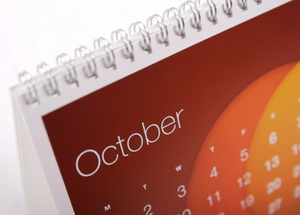
While Denver’s weather in 2010 was generally pretty quiet that isn’t to say there wasn’t something to talk about. Below is a month by month narrative from the National Weather Service for each month of the year.
Also be sure to check out Thornton’s 2010 weather year in review.
From the National Weather Service:
JANUARY…ONLY A TOTAL OF 0.07 INCH OF LIQUID EQUIVALENT WAS COLLECTED DURING JANUARY 2010 WHICH CAME FROM MELTED SNOWFALL. THIS IS 0.44 INCH BELOW THE NORMAL OF 0.51 INCH. IT ALSO TIED 1961 AS THE 6TH DRIEST JANUARY SINCE DENVER RECORDS KEEPING BEGAN IN 1872. ONLY 2 DAYS RECORDED MEASURABLE MOISTURE WITH THE 6TH COLLECTING THE MOST IN A 24 HOUR PERIOD WITH ONLY 0.05 INCH. IN THE SNOWFALL DEPARTMENT WHERE MEASUREMENTS ARE TAKEN NEAR THE DENVER INTERNATIONAL AIRPORT (DIA)… ONLY 2.6 INCHES OF THE WHITE STUFF WAS RECORDED. THIS AGAIN WAS BELOW THE JANUARY NORMAL OF 7.7 INCHES. FOR THE SEASON…THE GOOD NEWS IS THAT THE JULY THROUGH JANUARY’S SEASONAL TOTAL WAS 40.2 INCHES WHICH IS 6.9 INCHES ABOVE THE NORM OF 33.3 INCHES FOR THAT PERIOD OF TIME. 40.2 INCHES IS FAR BETTER THAN THE 2008-09 SEASONAL TOTAL THROUGH JANUARY OF A MERE 16.9 INCHES. THERE WERE NO PRECIPITATION RECORDS SET OR TIED DURING THE MONTH.
JANUARY 2010 TEMPERATURE STATISTICS TURNED OUT TO BE A NON-HEADLINE. THE MONTH FINISHED WITH AN AVERAGE TEMPERATURE OF 30.4 DEGREES WHICH IS 1.2 DEGREES ABOVE THE 29.2 NORMAL. TEMPERATURES RANGED FROM A HIGH OF 58 DEGREES DOWN TO A LOW OF A NON-RECORD -16 DEGREES. IN FACT… THERE WERE NO TEMPERATURE RECORDS SET OR TIED DURING JANUARY 2010. ALL 31 DAYS HAD LOW TEMPERATURES AT OR BELOW FREEZING AND 3 DAYS HAD MINIMUM TEMPERATURES BELOW ZERO. TWO DAYS HAD HIGH MERCURY READINGS AT OR BELOW FREEZING. JANUARY 2009 SEEMED LIKE A COOL MONTH AS THERE WERE ONLY 7 READINGS THAT REACHED INTO THE FIFTIES. OBVIOUSLY THE REST OF THE MONTH ONLY SAW READINGS IN THE 40S OR BELOW.
THREE DAYS HAD DENSE FOG (VISIBILITY OF 1/4 MILE OR LESS) RECORDED AT DIA. LIGHT FOG WAS OBSERVED ON 8 DAYS. THE PEAK WIND DURING THE MONTH WAS A FAIRLY LIGHT GUST OF 35 MPH FROM A NORTHWESTERLY DIRECTION (310 DEGREES).
FEBRUARY…IT WAS A COOL FEBRUARY WITH THE MONTH FINISHING WITH A 29.1 DEGREE AVERAGE TEMPERATURE WHICH WAS 4.1 DEGREES BELOW THE NORMAL OF 33.2 DEGREES. EVEN THOUGH IT WAS 4.1 DEGREES BELOW NORMAL…IT WAS STILL 3.9 DEGREES BELOW THE 10TH COLDEST FEBRUARY WHICH WAS 25.2 DEGREES ESTABLISHED IN 1905. THE COLDEST FEBRUARY OCCURRED IN 1954 WITH A VERY FRIGID 17.6 DEGREE AVERAGE. THE FEBRUARY AVERAGE OF 29.1 DEGREES WAS COLDER THAN THE JANUARY 2010 30.4 DEGREE AVERAGE. TEMPERATURES DURING FEBRUARY RANGED FROM A HIGH OF 52 DEGREES ON THE 27TH DOWN TO A LOW OF -1 DEGREE ON THE 9TH. ONLY 3 DAYS DURING THE MONTH REGISTERED HIGHS IN THE 50S. ALL 28 DAYS REGISTERED OVERNIGHT LOW TEMPERATURES AT OR BELOW FREEZING WITH 8 DAYS WHEN THE HIGH TEMPERATURE DID NOT REACH ABOVE 32 DEGREES. ONLY 1 LOW TEMPERATURE DIPPED BELOW ZERO.
PRECIPITATION WAS ALSO BELOW NORMAL. THE MONTH FINISHED WITH ONLY 0.30 INCH OF LIQUID WHICH WAS MEASURED FROM WATER EQUIVALENT OF SNOW. THIS EQUATED TO 0.19 INCH BELOW THE NORMAL OF 0.49 INCH. NINE DAYS RECORDED MEASURABLE MOISTURE BUT THERE WAS NO DAYS THAT ACCUMULATED .10 INCH OR MORE. THE MAXIMUM 24 HOUR LIQUID MEASUREMENT WAS 0.10 INCH BUT THAT COVERED 2 DAYS…THE 7TH AND 8TH. IN THE SNOWFALL DEPARTMENT…5.8 INCHES OF SNOWFALL WAS MEASURED AT THE AIRPORT. THIS WAS ONLY 0.5 INCH BELOW THE NORM OF 6.3 INCHES. THE 24 HOUR SNOWFALL MAXIMUM WAS 1.7 INCHES ON THE 20TH AND 21ST. THERE WERE NO PRECIPITATION OR SNOWFALL RECORDS SET OR TIED DURING THE MONTH. THE DRIEST FEBRUARY WAS 0.01 INCH COLLECTED IN 1970 AND THE WETTEST FEBRUARY WAS 2.01 INCHES IN 1934. THE MOST FEBRUARY SNOW OCCURRED IN 1912 WITH 22.1 INCHES WHILE THE LEAST AMOUNT OF FEBRUARY SNOWFALL WAS A TRACE WHICH OCCURRED JUST LAST YEAR…2009.
THE AVERAGE FEBRUARY WIND SPEED WAS 7.6 MILES PER HOUR WHILE THE PEAK GUST DURING THE MONTH WAS ONLY 35 MPH FROM A SOUTHWESTERLY DIRECTION (210 DEGREES).
Continue reading Denver’s 2010 weather – Month by month narrative


 Like any other month in Denver January can yield a wide variety of conditions. The month is pretty consistently our coldest but by the end of the month we do start to see temperatures slowly start to climb. Big time snow can and does happen but more often than not the month is quite dry – in fact it is our second driest month of the year.
Like any other month in Denver January can yield a wide variety of conditions. The month is pretty consistently our coldest but by the end of the month we do start to see temperatures slowly start to climb. Big time snow can and does happen but more often than not the month is quite dry – in fact it is our second driest month of the year.




